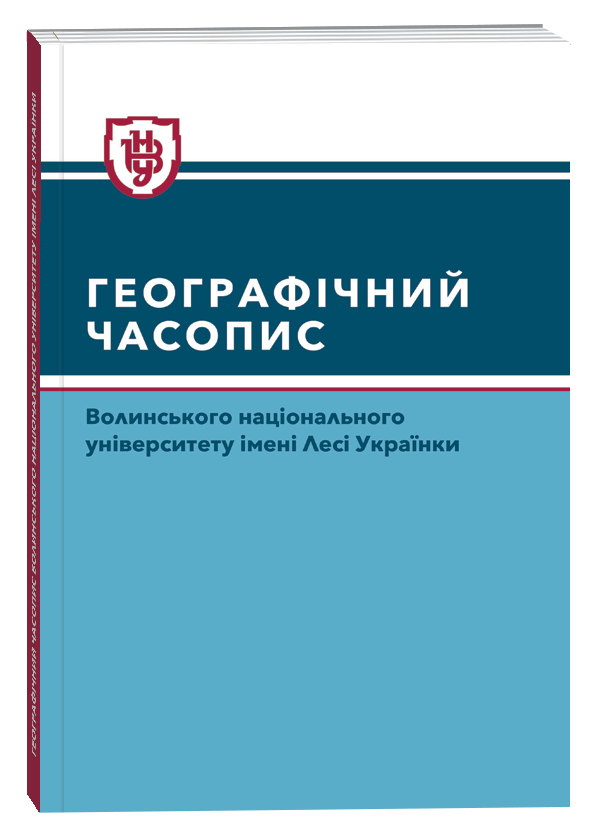USE OF THE WATER BALANCE FOR THE CONSTRUCTION OF A PREDICTIVE CONCEPTUAL HYDROGEOLOGICAL MODEL UNDER THE CONDITIONS OF LIMITED INPUT DATA
DOI:
https://doi.org/10.32782/geochasvnu.2025.5.07Keywords:
aquifer complex, water consumption, hydrodynamic changes, geographic information systems, recharge conditions, Darcy balanceAbstract
The goal of ecologically balanced water use is to ensure the functioning of ecosystems at a level that is as close to natural as possible. The exploitation of water resources should not be accompanied by the degradation of hydroecosystems above the acceptable minimum level. Sustainable groundwater extraction faces challenges due to limited knowledge and tools to understand groundwater dynamics. Accurate groundwater recharge forecasts are crucial for assessing the impact of climate change on groundwater resources, as well as for effective planning and management. A balance assessment helps determine whether withdrawals and recharge in an aquifer are well balanced, which is crucial for water management. Today, as the population’s need for access to high-quality and sustainable drinking water increases, groundwater is increasingly being used for water supply. The problems of water supply and groundwater quality are of strategic importance and require a comprehensive approach.The study of the groundwater system usually involves predicting the state of this system in the future under the influence of natural and anthropogenic factors that shape it. The degree of disturbance to the natural groundwater regime depends on many factors, but primarily on the structure of the geofiltration medium, the type of water exchange basin, the depth of underground development, the nature of development and the degree of anthropogenic load. To determine changes in hydrodynamic conditions, it is important to determine the groundwater balance. The modeled water balance using the ArcMap tool, namely Darcy Flow, allows us to identify and clarify the conditions of groundwater supply and discharge, and draw conclusions about the quantitative relationships between different components of the system's water balance. To assess the state of drinking aquifers, especially their quality indicators, it is necessary to rely on monitoring results. The results of the study demonstrate the feasibility of applying balance methods in the hydrogeological monitoring system along with spatial analysis and modeling in GIS to assess and predict the state of drinking aquifers in order to ensure balanced water use.
References
Національна доповідь про якість питної води та стан питного водопостачання в Україні у 2021 році. URL: https://mtu.gov.ua/content/nacionalna-dopovid-pro-yakist-pitnoi-vodi-ta-stan-pitnogo-vodopostachannya-v- ukraini.html (дата звернення: 03.02.2025).
Кошляков О., Диняк О., Кошлякова І. Виснаження та забруднення питних водоносних горизонтів в умовах інтенсивної експлуатації на території м. Києва. Вісник Київського національного університету імені Тараса Шевченка. Геологія. 1 (56). Київ : ВПЦ «Київ. ун-т», 2012. С. 38–42.
Федоренко А.С., Буян Н.Н., Нікіташ Ю.О. Геолого-економічна переоцінка експлуатаційних запасів Київського родовища питних підземних вод для ПрАТ «АК «Київводоканал» в м. Києві. Київська гідрогеологічна експедиція ДП «Українська геологічна компанія». 2017. 153 с.
Dyniak O., Koshliakov O., Koshliakova I. Application of spatial analysis and modeling in GIS in the implementation of the water balance method in the hydrogeological monitoring system. Conference Paper.
XVII International Scientific Conference on “Monitoring of Geological Processes and Ecological Condition of the Environment”, 7–10 November 2023, Kyiv, Ukraine. https://doi.org/10.3997/2214-4609.2023520152
Koshliakov O., Dyniak O., Koshliakova I. Modeling in monitoring system of underground hydrosphere for territories under technogenic pressure. Abstract of XI International Scientific Conference “Mon- itoring of Geological Processes and Ecological Condition of Environment”, 2019, Kyiv, Ukraine. https://doi.org/10.3997/2214-4609.201903232







